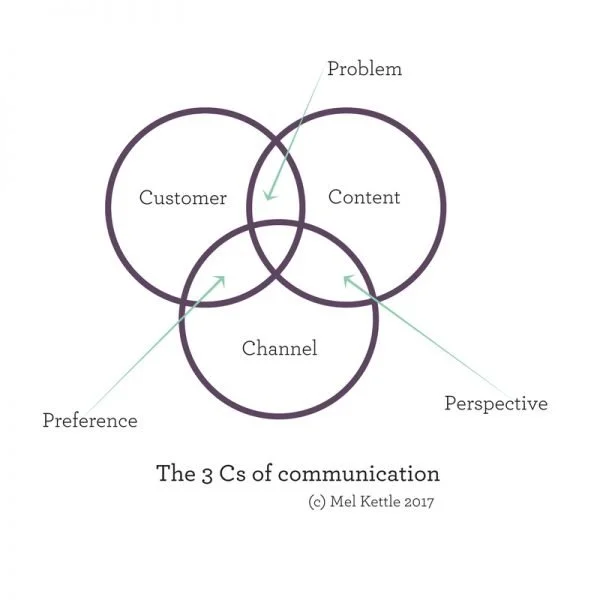Is your communication getting cut-through?
“The single biggest problem in communication is the illusion it has taken place.” George Bernard Shaw
With the average person having an attention span shorter than that of a goldfish, it’s more important than ever that we get our communication right first go.
There are three main things you need to think of when communicating – you need to have the right content delivered to the right customer via the right channel. It doesn’t seem difficult, but for many organisations it is.
It’s a bit like fly-fishing. Years ago my English uncle, a keen fly-fisherman, explained it to me as we prepared for an expedition to Scotland (an hour or two from his home) to go salmon fishing*. I was 22 and super-excited about trying something he was so passionate about. Plus, I was excited about the prospect of salmon for dinner (it’s a fave!). He spent a long time explaining how to tie a fly, and what all the other bits and pieces did. He explained how you cast, how you spot where the fish might be and where you want the fly to land. He told me to have the best chance of catching a fish, you need to use the right rod to cast the right fly in the right spot at the right time.
Just like communication.
And like fly-fishing, bad communication is simply the result of those who don’t know when and how to use the right flies. And they end up just scaring the fish away.
Think of it in terms of the three Cs.
Customer. Channel. Content.
How to get cut-through with your communication
Let’s break down each of these:
Managing the customer is the most important of the 3Cs. You need to know their problems so you can provide a solution. There are many ways to identify these – the old way was to conduct research via surveys and focus groups. Sure, you can still do this, but most customers will tell you their problems via social media. You just need to be listening. And also asking the right questions.
Content is the currency of social media, and the content you share needs to solve your customers’ problems. Share your own content, but also curate content that helps them. A good rule of thumb is that out of every ten pieces of content you share, eight should belong to someone else (i.e. it’s curated content from thought leaders, customers, partners, advocates, influencers); one should be your original content; one can be promotional. Look at your content and see how much of it is promotional vs truly valuable to your audience.
According to Joe Pulizzi, “90% of content created in medium-large sized organisations is about the company, only 10% is audience-centered”. Please be the 10%.
So how do you create valuable content? Get back to basics. If you’re a dentist, write about the importance of flossing. If you’re a membership association, write about the how being a member of your association can provide benefits in terms of professional development and career progression. If you’re a pharmacy, talk about how to prevent getting the flu this season (and don’t make it all about the flu shot). Providing valuable content that solves problems will help keep you top of mind. If you provide great content, you open up the opportunities for conversation and engagement, which helps move you up the Social Media Value Model, thereby building trust.
In terms of channel, go where your customers are. With an ever-increasing choice, from offline (mass media, face to face, publications, direct mail, mobile phone, events, enabling advocates) to online (websites, enewsletters, social media), it’s important to choose the right channel to reach your audience. M<ake your decision based on where your audience is, how they prefer to receive information, and the nature of the information you need to communicate. According to research by Social Media Examiner, all marketers identify Facebook as being the single most important social media channel. In 2017 Facebook passed LinkedIn as the most important platform for B2B marketers.
Now have a look at your communication. Are you getting the 3Cs right?
* I know you’re all desperately wanting to know how many salmon we caught that day. Sadly the weather was miserable so we decided to go to Whitby for a fish and chips lunch in a cozy pub instead. And Uncle Michael bought me my first Guinness. I’ll never forget that day. And I still haven’t been to Scotland.

